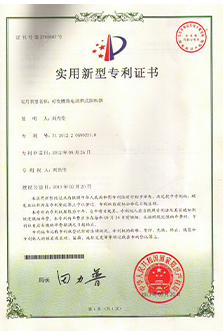 Afrikaans
Afrikaans  Albanian
Albanian  Amharic
Amharic  Arabic
Arabic  Armenian
Armenian  Azerbaijani
Azerbaijani  Basque
Basque  Belarusian
Belarusian  Bengali
Bengali  Bosnian
Bosnian  Bulgarian
Bulgarian  Catalan
Catalan  Cebuano
Cebuano  Corsican
Corsican  Croatian
Croatian  Czech
Czech  Danish
Danish  Dutch
Dutch  English
English  Esperanto
Esperanto  Estonian
Estonian  Finnish
Finnish  French
French  Frisian
Frisian  Galician
Galician  Georgian
Georgian  German
German  Greek
Greek  Gujarati
Gujarati  Haitian Creole
Haitian Creole  hausa
hausa  hawaiian
hawaiian  Hebrew
Hebrew  Hindi
Hindi  Miao
Miao  Hungarian
Hungarian  Icelandic
Icelandic  igbo
igbo  Indonesian
Indonesian  irish
irish  Italian
Italian  Japanese
Japanese  Javanese
Javanese  Kannada
Kannada  kazakh
kazakh  Khmer
Khmer  Rwandese
Rwandese  Korean
Korean  Kurdish
Kurdish  Kyrgyz
Kyrgyz  Lao
Lao  Latin
Latin  Latvian
Latvian  Lithuanian
Lithuanian  Luxembourgish
Luxembourgish  Macedonian
Macedonian  Malgashi
Malgashi  Malay
Malay  Malayalam
Malayalam  Maltese
Maltese  Maori
Maori  Marathi
Marathi  Mongolian
Mongolian  Myanmar
Myanmar  Nepali
Nepali  Norwegian
Norwegian  Norwegian
Norwegian  Occitan
Occitan  Pashto
Pashto  Persian
Persian  Polish
Polish  Portuguese
Portuguese  Punjabi
Punjabi  Romanian
Romanian  Russian
Russian  Samoan
Samoan  Scottish Gaelic
Scottish Gaelic  Serbian
Serbian  Sesotho
Sesotho  Shona
Shona  Sindhi
Sindhi  Sinhala
Sinhala  Slovak
Slovak  Slovenian
Slovenian  Somali
Somali  Spanish
Spanish  Sundanese
Sundanese  Swahili
Swahili  Swedish
Swedish  Tagalog
Tagalog  Tajik
Tajik  Tamil
Tamil  Tatar
Tatar  Telugu
Telugu  Thai
Thai  Turkish
Turkish  Turkmen
Turkmen  Ukrainian
Ukrainian  Urdu
Urdu  Uighur
Uighur  Uzbek
Uzbek  Vietnamese
Vietnamese  Welsh
Welsh  Bantu
Bantu  Yiddish
Yiddish  Yoruba
Yoruba  Zulu
Zulu Understanding the Functionality and Benefits of Troughing Rolls in Conveyor Systems
Understanding Troughing Rolls Functionality and Importance in Material Handling
Troughing rolls are essential components in the design and operation of conveyor systems, particularly in bulk material handling applications. These rolls serve a crucial role in keeping materials securely in place while they are moved from one point to another, ensuring efficient and safe transportation in various industries.
The Design and Structure of Troughing Rolls
Typically used in belt conveyors, troughing rolls consist of a series of rollers arranged in a trough shape, which is designed to support and stabilize the conveyor belt. The most common configuration includes three rollers one at the bottom and two on the sides, forming a V-shape that helps to contain the materials within the belt's centerline. This design minimizes spillage, optimizes material flow, and reduces the risk of damage to both the belt and the material being transported.
Troughing rolls come in various sizes and configurations tailored to specific applications and material types. The angle of the trough can also vary, typically ranging from 20 to 45 degrees, depending on the type of material being conveyed and the requirements of the operation. The surface of the rolls is often coated with materials that provide additional friction, ensuring a strong grip on the belt and preventing slippage during operation.
Importance in Material Handling
The functionality of troughing rolls is significant in many industries, including mining, agriculture, recycling, and manufacturing. Effective material handling is critical for maximizing productivity and minimizing operational costs. By using troughing rolls, companies can achieve the following
troughing rolls

1. Reduced Material Loss The trough shape of the rolls ensures that materials do not spill over the sides of the belt during transport. This containment is especially vital when moving loose or granular materials, such as coal, grains, or aggregates.
2. Increased Safety By preventing material spillage and helping maintain a stable and consistent flow, troughing rolls contribute to safer working conditions. They reduce the risk of accidents caused by slipping hazards or malfunctioning conveyor systems.
3. Improved Efficiency Troughing rolls support the smooth operation of conveyor belts, leading to faster material transportation. This efficiency translates to reduced downtime and increased throughput, offering businesses a competitive edge in their respective markets.
4. Longevity of Equipment Properly functioning troughing rolls can extend the life of conveyor belts and other associated equipment. By minimizing wear and tear caused by material spillage and providing proper support, these rolls contribute to lower maintenance costs and fewer equipment replacements.
Conclusion
In summary, troughing rolls play a pivotal role in the efficiency, safety, and reliability of conveyor systems used in bulk material handling. Their design and functionality help mitigate common challenges faced in various industrial applications, making them indispensable components in material transportation systems. As industries continue to evolve and grow, the importance of effective material handling solutions, such as troughing rolls, will remain paramount in ensuring operational success. Investing in high-quality troughing rolls is a strategic decision that can lead to improved productivity, reduced costs, and enhanced safety in the workplace.
-
Wing Pulley Conveyor for Conveyor Belt MaintenanceNewsJun.16,2025
-
Self Cleaning Spiral Idler for Conveyor DesignNewsJun.16,2025
-
Pulley Lagging for Conveyor Belt AlignmentNewsJun.16,2025
-
Impact Idlers Used in Belt Conveyor for PerformanceNewsJun.16,2025
-
Ceramic Lagging Conveyor Pulley for Conveyor Belt SystemsNewsJun.16,2025
-
Belt Conveyor Idler for Heavy-Duty ApplicationsNewsJun.16,2025





























